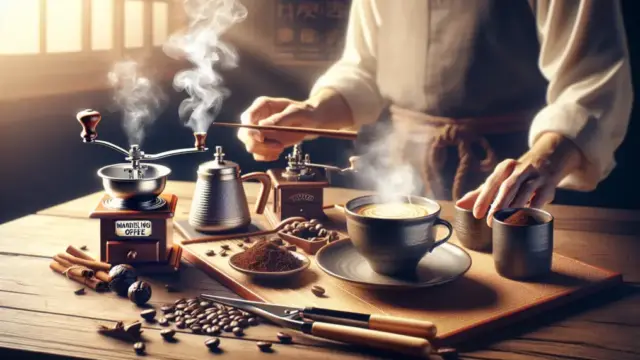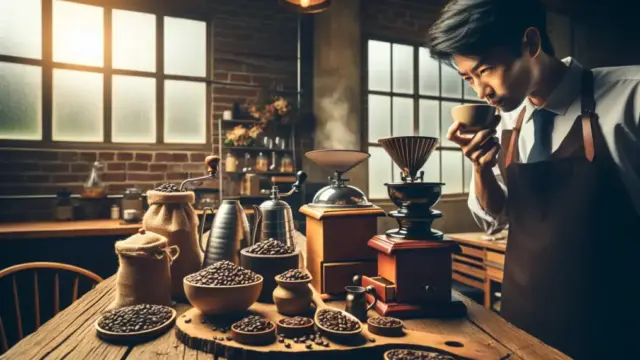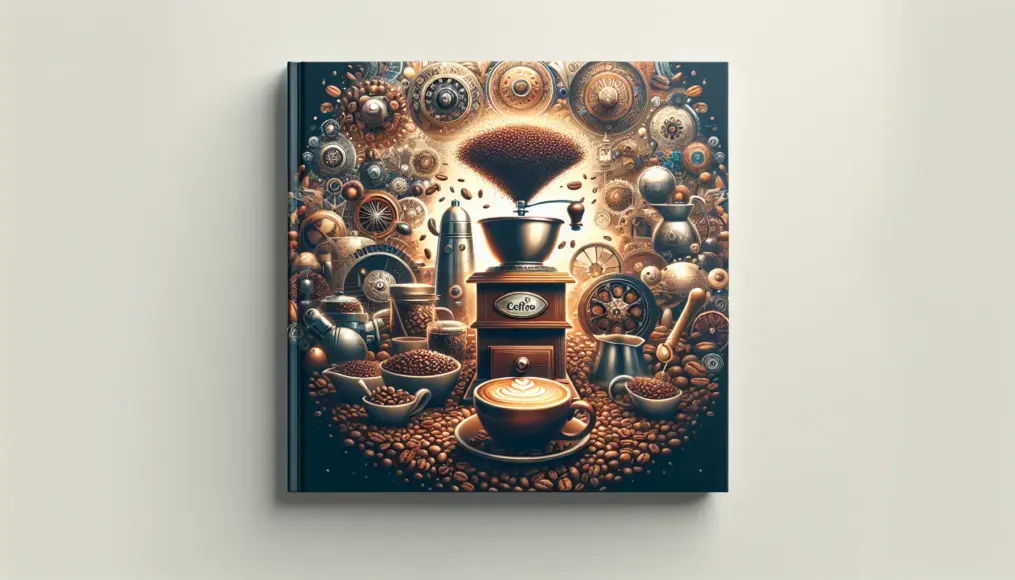In the world of coffee, the selection of beans and their quantity hold the key to unlocking incredible flavors. Finding the right coffee beans for your taste can transform your daily coffee ritual into something truly special. In this article, we’ll delve into the various types of coffee beans and their unique characteristics, as well as explore the ideal amounts for brewing.
Additionally, by examining the roasting process and the rich coffee cultures from different countries, you may rediscover the deep allure of coffee. Get ready to uncover tips that will enrich your coffee life!
- Understanding bean types and characteristics to choose the perfect coffee for you
- The impact of coffee quantity on flavor and what the ideal amount is
- Exploring the intricacies of the roasting process and coffee culture
Choosing Coffee Beans and Why It Matters
The flavor of coffee is significantly influenced by the type of beans you choose. Beans are the foundation of coffee, and the selection you make can alter the aroma and taste of your brew. Finding the right beans for your palate is the first step in enjoying coffee to its fullest. In this article, we’ll dive into the different types of beans, their characteristics, and how to pick the ones that suit you best.
Types of Beans and Their Characteristics
There are various types of coffee beans, each with its own unique traits. The two most prominent varieties are Arabica and Robusta. Arabica beans are known for their sweetness and acidity, delivering a rich and flavorful experience. In contrast, Robusta beans tend to have a stronger bitterness and higher caffeine content. Understanding these differences is crucial, as the type of bean you choose will directly impact the flavor of your coffee.
Additionally, the region where the beans are grown and the roasting methods used can significantly affect their flavor. By familiarizing yourself with the characteristics associated with different growing regions and roast levels, you can more easily find a style that you enjoy.
- Characteristics of Arabica and Robusta Beans
- Flavor Differences Based on Growing Region and Roast Level
- The Importance of Understanding Bean Varieties
How to Choose the Right Beans for You
When selecting coffee beans, it’s essential to consider your personal preferences and the context in which you’ll be drinking the coffee. For instance, if you’re looking for a light and refreshing cup to kickstart your morning, Arabica beans are a great choice. On the other hand, if you want to indulge in a full-bodied experience, experimenting with Robusta beans or blends could be the way to go.
Tasting different coffees can also help you discover what you truly enjoy. Visit coffee shops or specialty stores to sample a variety of beans and find the flavor that resonates with your palate. This exploration is not just about finding your favorite bean; it’s also a way to deepen your appreciation for coffee.

If you found this article interesting, you might also enjoy our piece on “How to Choose Coffee Beans and Deepen Your Understanding of Acidity.” Here, we provide an in-depth look at bean selection, roasting, and the nuances of acidity, offering plenty of insights to enrich your coffee experience. Be sure to check it out for tips to enhance your coffee life!
- Choosing Beans with Your Preferences in Mind
- Selecting Beans for Different Drinking Occasions
- The Joy of Discovering Your Preferences Through Tasting
The Impact of Coffee Quantity on Flavor
The deliciousness of coffee depends not only on the type of beans you choose but also significantly on the quantity used. In fact, by adjusting the amount of coffee, you can alter the flavor and aroma, creating a cup that suits your personal taste. In this section, we’ll explore the ideal amount of coffee and the differences in taste that can be achieved through careful measurement.
What is the Ideal Amount of Coffee?
The ideal amount of coffee can vary depending on your brewing method and personal preference, but the coffee-to-water ratio is generally key. For instance, when brewing drip coffee, it’s typically recommended to use around 10 to 15 grams of coffee grounds for one cup (about 180ml). Sticking to this ratio can help you enjoy a well-balanced flavor.
It’s also a good idea to experiment by slightly adjusting the amount to fit your taste. Using less coffee can yield a lighter flavor, while using more can bring out a rich, full-bodied experience. This kind of adjustment can bring you closer to your perfect cup.
- Ideal coffee-to-water ratio
- Differences in quantity based on brewing methods
- Adjusting the amount to suit your taste
Flavor Changes Through Quantity Adjustments
By adjusting the amount of coffee, you can create dramatic changes in flavor and aroma. For example, reducing the coffee grounds enhances a light and fruity taste. On the other hand, increasing the amount brings out deeper richness and bitterness. Thus, the quantity of coffee is a crucial factor that influences the overall taste.
Furthermore, adjusting the amount allows you to tailor your coffee experience to different occasions and moods, expanding your enjoyment of this beloved beverage. Whether you’re in the mood for a light cup or a robust brew, the versatility of coffee lets you choose according to your preferences.

If you found this article interesting, we recommend checking out our piece on “Exploring the Allure of Aromatic Coffee!” to deepen your understanding of coffee flavors. It offers insights into selecting beans and roasting techniques to enjoy aromatic coffee even more. Packed with tips, it’s a great resource to enhance your coffee experience.
- Flavor changes through quantity adjustments
- Balancing lightness and richness
- Choosing the right amount for different occasions
The Roasting Process and Its Allure
The flavor and aroma of coffee are influenced not only by the selection and quantity of beans but also significantly by the roasting process. Roasting is a crucial step that transforms raw coffee beans through heat, unlocking their unique flavors. In this section, we’ll delve into the essentials of roasting and explore how different roast levels affect taste, deepening our appreciation for coffee.
The Basics of Roasting
Roasting is the process of applying heat to green coffee beans, which triggers chemical reactions that enhance flavor and aroma. As the beans roast, they undergo a change in color, and a delightful, toasty scent fills the air. There are various roast levels—light, medium, and dark—each contributing distinct flavors to the brew.
Understanding the basics of roasting is vital for truly enjoying coffee. The roast level affects the balance of acidity, bitterness, and sweetness, making it an exciting journey to discover which roast suits your palate best.
- The Importance of the Roasting Process
- Flavor Variations by Roast Level
- The Joy of Finding Your Perfect Roast
Flavor Differences by Roast Level
The roast level has a profound impact on coffee’s flavor profile. Lightly roasted beans showcase vibrant fruity acidity and a refreshing taste. Medium roasts offer a balanced profile, harmonizing sweetness and acidity. In contrast, dark roasts bring out stronger bitterness, resulting in a rich and robust flavor.
As you can see, the roast level dramatically alters the coffee experience. By selecting a roast level that matches your taste preferences and the occasion, you can elevate your coffee enjoyment to new heights.
- Flavor Characteristics by Roast Level
- How to Choose the Right Roast for Your Taste
- Selecting Roast Levels for Different Drinking Occasions
The Rich Culture and History of Coffee
Coffee is more than just a drink; it holds significant cultural and historical importance around the globe. Each region has developed its own unique coffee culture, and coffee serves as a medium for fostering communication among people. In this section, we will explore the distinctive characteristics of coffee culture in various countries and the vital role that coffee plays in promoting social interaction.
Coffee Culture Around the World
Coffee culture varies widely from one place to another. For instance, in Ethiopia, the coffee ceremony is a cherished tradition where family and friends gather to enjoy coffee together, creating a sense of community. In Italy, the espresso culture is deeply ingrained, as people savor this quick and convenient coffee option amidst their busy lives. Meanwhile, in Sweden, “fika,” or coffee breaks, are an essential part of the day, allowing friends and colleagues to unwind and connect over coffee and pastries.
These examples illustrate how coffee culture reflects the lifestyle and values of each region. Engaging over coffee can also help bridge cultural gaps and promote understanding among diverse groups.
- Ethiopian Coffee Ceremony
- Italian Espresso Culture
- The Significance of Fika in Sweden
The Communicative Power of Coffee
Coffee acts as a powerful tool for communication. Whether it’s catching up with friends, discussing business matters, or meeting new people, having coffee on hand naturally sparks conversation. Cafés and coffee shops provide relaxed environments where people come together, fostering a variety of interactions.
Moreover, sharing coffee can help build intimacy and closeness between individuals. That’s why coffee transcends being just a beverage; it plays a crucial role in strengthening bonds among people.

If you’re interested in this topic, check out our article on “How to Make Your Coffee Taste Better at Home” for some practical tips to enjoy coffee in the comfort of your own space. By learning how to enhance the flavors of your coffee, you can elevate your daily coffee experience even more!
- Social Interactions Through Coffee
- The Role and Importance of Cafés
- Increasing Intimacy Through Coffee Sharing
Conclusion
Coffee can be enjoyed in countless ways, and understanding how the choice of beans, roasting, and the amount used affects the flavor is crucial. By finding the right beans and brewing them in the ideal amount, you can elevate your coffee experience to new heights. It’s also important to appreciate coffee’s role in various cultures and as a medium for communication. Through coffee, you can connect with a diverse range of people and enjoy meaningful interactions.
As you continue to enrich your own coffee life, consider using the insights from this article as a guide. I hope your coffee moments become even more special.
- The choice of beans and the amount used significantly affect the taste of coffee.
- Understanding that the roasting process alters flavor profiles is essential.
- Coffee serves as a means of culture and communication.
Why not take some time to discover your perfect coffee and enjoy those rich moments? If you have any thoughts or questions, feel free to share them in the comments!










































































Comment